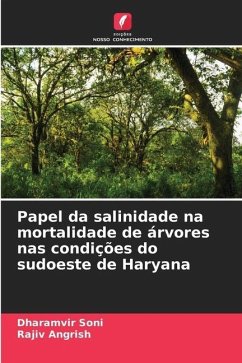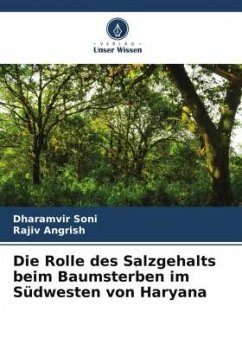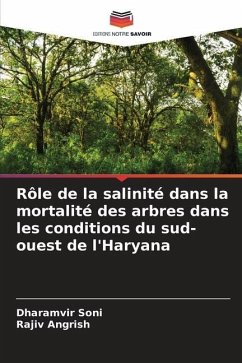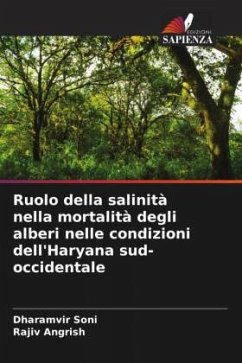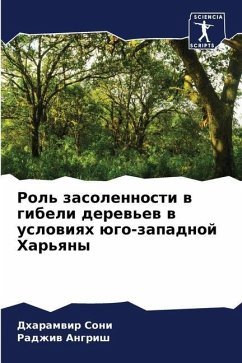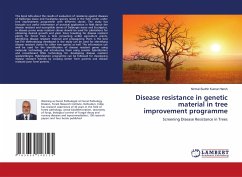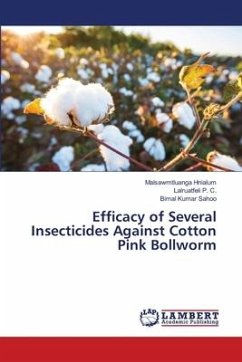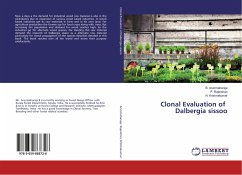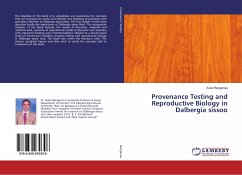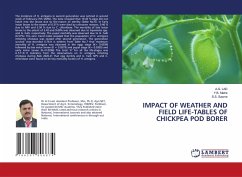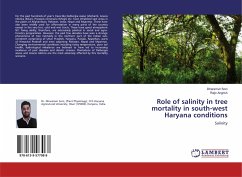
Role of salinity in tree mortality in south-west Haryana conditions
Salinity
Versandkostenfrei!
Versandfertig in 6-10 Tagen
24,99 €
inkl. MwSt.

PAYBACK Punkte
12 °P sammeln!
For the past hundreds of year's trees like Dalbergia sissoo (shisham), Acacia nilotica (Kikar), Prosopis cinneraria (Khejri) etc. have inhabited vast areas in the plains of Afghanistan, Pakistan, India, Nepal and Myanmar. These have also been widely used for afforestation in many parts of the country except in the very hot, cold and wet tracts. These have good atmospheric N2- fixing ability, therefore, are extensively planted in social and agro-forestry programmes. However, the past few decades have seen a strange phenomena of tree mortality in the northern part of the Indian sub-continent com...
For the past hundreds of year's trees like Dalbergia sissoo (shisham), Acacia nilotica (Kikar), Prosopis cinneraria (Khejri) etc. have inhabited vast areas in the plains of Afghanistan, Pakistan, India, Nepal and Myanmar. These have also been widely used for afforestation in many parts of the country except in the very hot, cold and wet tracts. These have good atmospheric N2- fixing ability, therefore, are extensively planted in social and agro-forestry programmes. However, the past few decades have seen a strange phenomena of tree mortality in the northern part of the Indian sub-continent comprising of Uttar Pradesh, Haryana, Punjab, Rajasthan, parts of Himachal Pradesh and even adjoining Pakistan, Nepal and Myanmar. Changing environmental conditions including rising temperature, poor soil health, hydrological imbalance are believed to have led to increasing incidence of pest diseases and abiotic stresses. Plantations of Dalbergia sissoo and Acacia nilotica are the most adversely affected by this mortality scenario.



